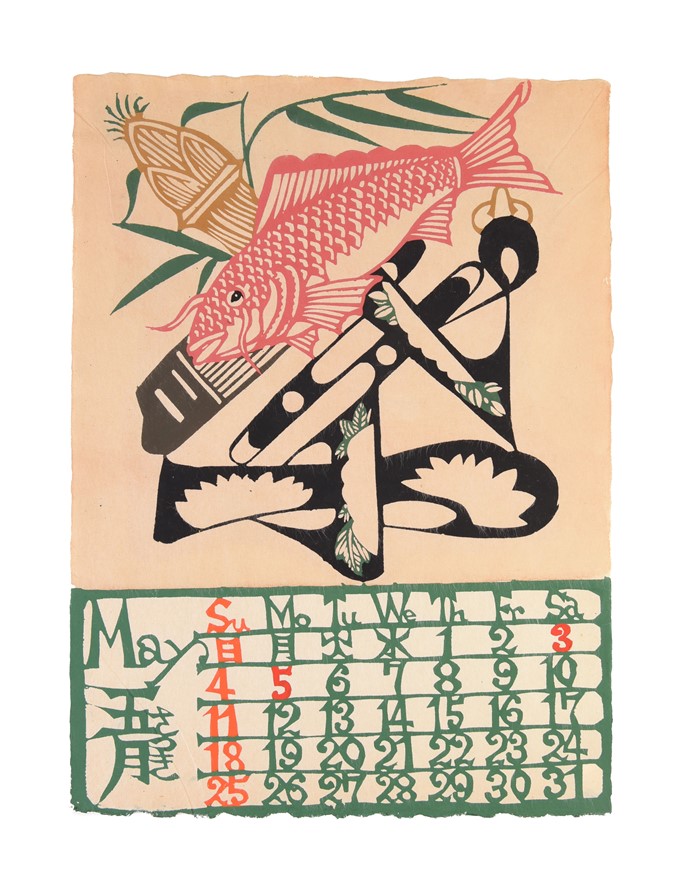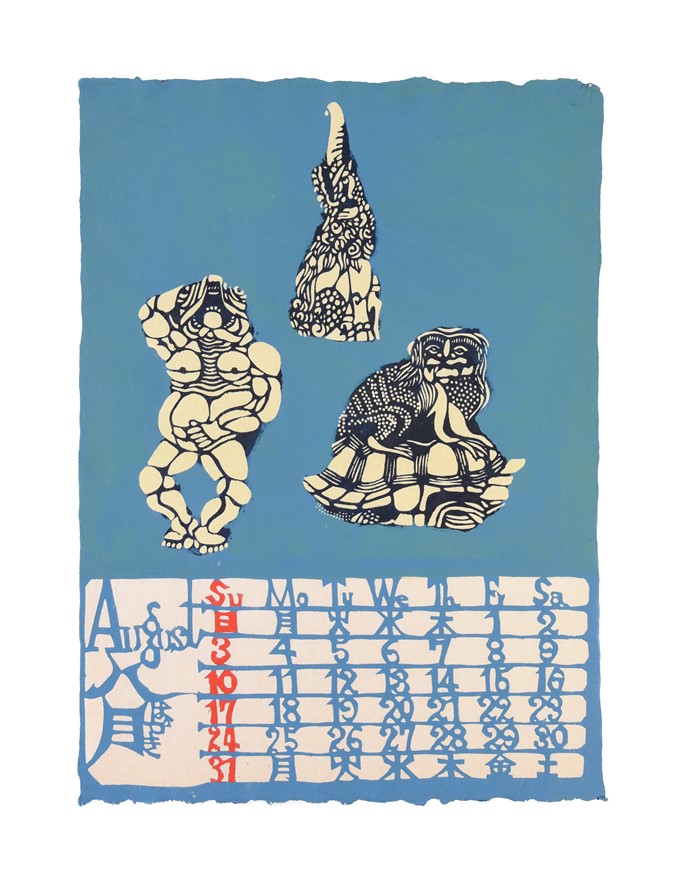Hinoe tora goshi ginka kana tsuguru ban katazome egoyomi [Stencil-dyed calendar for the year of the tiger]
KAMISAKI Sunao (1986)
£1250.00 [First Edition]
Please contact us in advance if you would like to view this book at our Curzon Street shop.
BLENDING EAST AND WEST IN TWELVE MONTHS
First edition. Twelve colour stencil printed sheets. 420 by 298mm. Unbound, all sheets encased in card folder with stencil printed title slip, first and last sheet slightly foxed, otherwise a near fine copy. N.p., self published,
An extremely luxurious, and slightly mysterious, katazome calendar.
Kamisaki begins this calendar with a portrait of a tiger, to mark the zodiac year. The themes then progress somewhat seasonally, with plum blossom in February and Buddhist figures in August, most likely to mark obon (a national holiday in August where the spirits of ancestors are believed to return to their graves). There is a distinct mix of cultures and themes represented, most of which are familiar in Kamisaki's other works. For example, we see Western clocks, lamps and coffee-pots. More surprising, perhaps, is the print with a Korean munjado character painting, a Western ship sailing with multiple flags, and the final print which shows a design for a circular stained glass window depicting Adam and Eve.
One point of mystery of this calendar is the lack of a limitation or publisher. One therefore assumes that it was privately printed, and privately circulated. This would have been a tremendous expense, as each print is immensely intricate and there is copious use of gold leaf.
This calendar is extremely rare. There are no records of it online or copies in OCLC.
About the artist:
Kamisaki Sunao is (he would be 92 years of age at the time of writing) an extraordinarily gifted artist, who produced several books printed in katazome (stencil-dye). Initially he was trained in Kyo-yuzen, a form of hand-painted textile dyeing specific to Kyoto, apprenticing under Kihachi Tabata (1877–1956), who was awarded Living National Treasure status for his contributions to textile dyeing. Kamisaki shifted from the medium of textile to paper, moving to Kochi Prefecture in 1955 to study Tosa washi paper-making. Though he continued to make textiles designs for kimono obi, it was in printing and book-making that Kamisaki shone. The earliest recorded book by Kamisaki is dated 1981 and his bibliography ranges from large-format illustrated poetry anthologies, to object-centred studies (most notably his illustrations of clocks and clock-makers), as well as small mame-hon. His work has been exhibited a number times in Japan – in 1990, the major Tokyo department store Takashima held a solo exhibition of his works.
Stock Code: 253863








